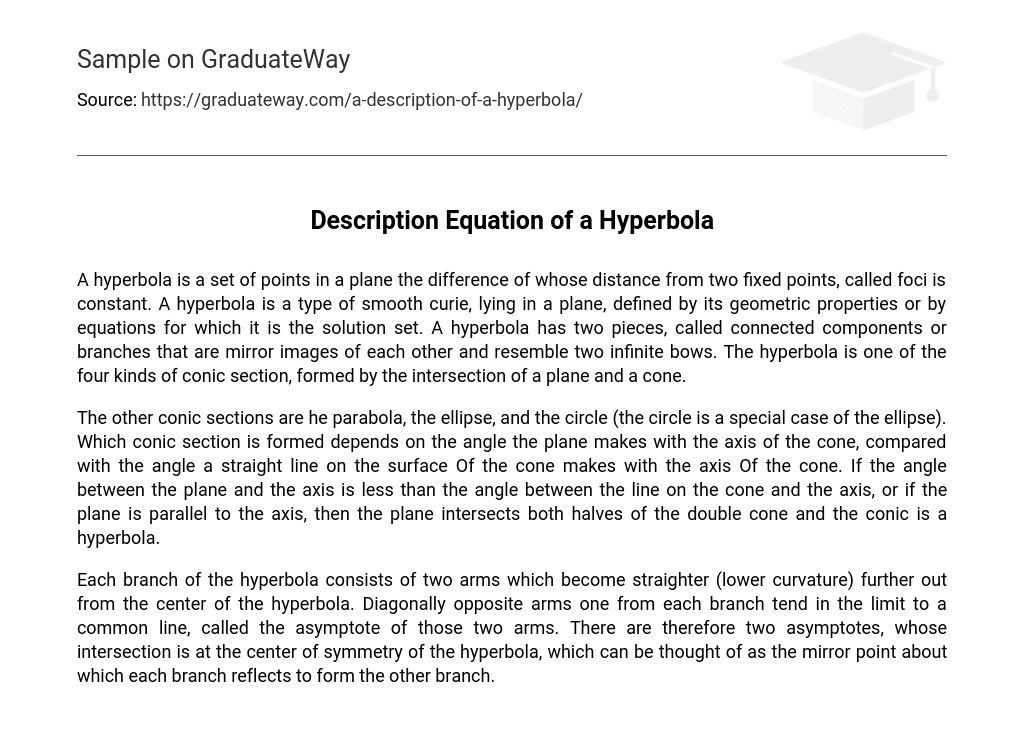A hyperbola is a set of points in a plane the difference of whose distance from two fixed points, called foci is constant. A hyperbola is a type of smooth curie, lying in a plane, defined by its geometric properties or by equations for which it is the solution set. A hyperbola has two pieces, called connected components or branches that are mirror images of each other and resemble two infinite bows. The hyperbola is one of the four kinds of conic section, formed by the intersection of a plane and a cone.
The other conic sections are he parabola, the ellipse, and the circle (the circle is a special case of the ellipse). Which conic section is formed depends on the angle the plane makes with the axis of the cone, compared with the angle a straight line on the surface Of the cone makes with the axis Of the cone. If the angle between the plane and the axis is less than the angle between the line on the cone and the axis, or if the plane is parallel to the axis, then the plane intersects both halves of the double cone and the conic is a hyperbola.
Each branch of the hyperbola consists of two arms which become straighter (lower curvature) further out from the center of the hyperbola. Diagonally opposite arms one from each branch tend in the limit to a common line, called the asymptote of those two arms. There are therefore two asymptotes, whose intersection is at the center of symmetry of the hyperbola, which can be thought of as the mirror point about which each branch reflects to form the other branch.





